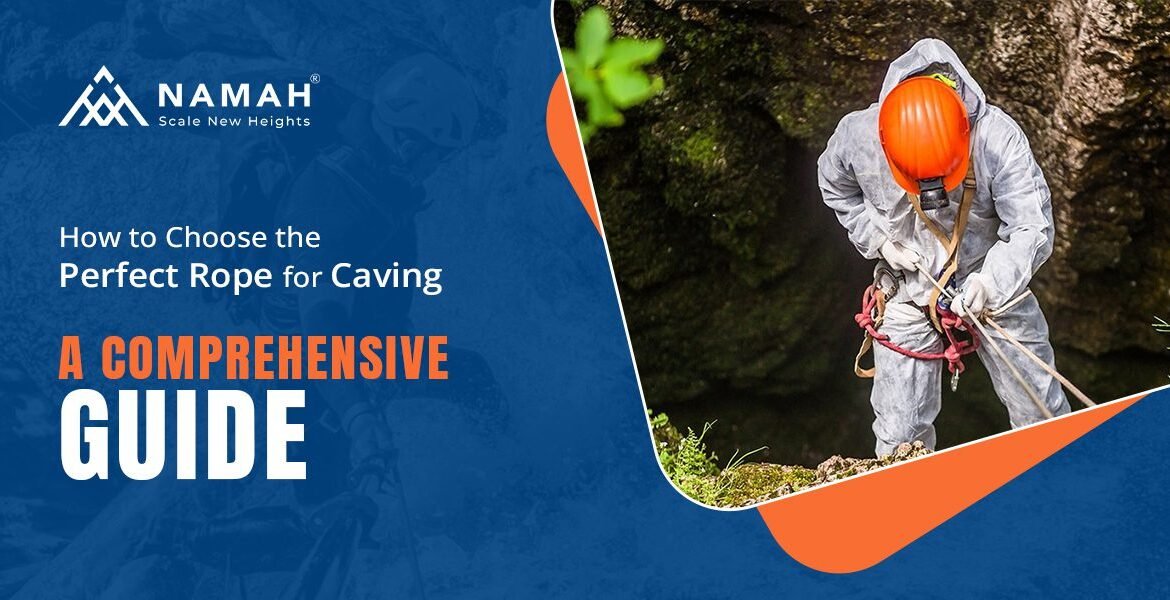Caving is an adventure that takes you into the mysterious depths of the earth, offering a mix of thrill and discovery. Whether you’re a seasoned caver or a beginner excited to explore, safety is your top priority. At the heart of your safety gear is one essential tool your rope. Choosing the right rope for caving might seem simple, but the variety of options and considerations can make it daunting. Here’s a guide to help you navigate the choices and make an informed decision.
Why Is Choosing the Right Rope So Important?
Caving ropes face unique challenges. They are exposed to sharp rocks, moisture, and heavy loads, making them prone to wear and tear. A good rope should handle these challenges while ensuring your safety. If your rope isn’t up to the task, it can turn an exciting adventure into a dangerous situation. The right rope will keep you secure, help you navigate tricky passages, and withstand the demands of the underground environment.
Static vs. Dynamic Ropes: Which One Should You Choose?
The first decision you’ll face is choosing between static and dynamic ropes. Static ropes are designed with minimal stretch, making them perfect for activities like rappelling, ascending, and hauling gear. Their steadiness provides better control and makes them ideal for vertical caving.
On the other hand, dynamic ropes, which stretch to absorb shock, are great for climbing where falls are common. However, their elasticity makes them harder to handle in tight spaces, reducing their suitability for caving. For most caving adventures, static ropes are the clear choice because they offer stability and reliability.
Rope Material: Durability Is Key
When it comes to rope material, nylon and polyester are two popular choices. Nylon ropes are valued for their strength and slight elasticity, making them capable of withstanding significant stress. They’re a dependable option for many caving scenarios.
Polyester ropes, however, have the added advantage of being less affected by water absorption. This makes them a great choice for wet environments, as they remain strong and resistant to mildew. Additionally, some ropes come with abrasion-resistant coatings, which provide an extra layer of durability against rough cave surfaces. This feature is particularly beneficial, as it ensures the rope lasts longer and performs better in harsh conditions.
Rope Diameter: Striking the Right Balance
The thickness of the rope, or its diameter, plays a big role in its functionality. Thicker ropes, typically around 10-12 mm, are more durable and easier to handle, especially when wearing gloves. However, they’re heavier, which can be a downside if you’re carrying other equipment over long distances.
Thinner ropes, in the range of 8-9 mm, are lighter and more compact but might not hold up as well against constant abrasion. For most cavers, a 10 mm rope strikes the perfect balance—it’s durable enough to handle rugged conditions while remaining manageable in terms of weight.
How Long Should Your Rope Be?
Rope length is another important consideration. Always plan to bring more rope than you think you’ll need. This gives you flexibility for anchors, knots, or any unexpected challenges you might encounter. For general caving, a rope length between 50 to 100 meters is usually sufficient. However, if you’re exploring deeper caves, you might need something longer. Running out of rope mid-expedition can be both inconvenient and dangerous, so it’s always better to overestimate.
Testing and Certification: A Guarantee of Safety
A rope’s certifications are its safety credentials. Look for ropes that meet UIAA (International Climbing and Mountaineering Federation) or CE (Conformité Européenne) standards. These certifications mean the rope has been rigorously tested for strength, durability, and performance under pressure. They’re your assurance that the rope can handle the demanding conditions of caving and won’t fail you when it matters most.
Caring for Your Rope: Make It Last
Proper care and maintenance of your rope are just as important as choosing the right one. After every caving trip, make it a habit to clean your rope thoroughly to remove dirt, mud, and debris that could weaken its fibers. Use clean water and let it dry completely before storing it.
Ensure you store it in a cool, dry place away from sunlight and chemicals, as these can degrade its quality. Regularly inspect your rope for signs of wear and tear, like fraying or cuts, and replace it if it shows significant damage. A well-maintained rope not only lasts longer but also ensures your safety on every trip.
Pro Tips for First-Time Buyers
If you’re buying your first caving rope, don’t hesitate to ask for recommendations from experienced cavers or knowledgeable staff at outdoor stores. They can guide you based on your specific needs and the conditions you’ll be exploring. Once you’ve got your rope, take the time to test it in a controlled environment before heading into a cave. This allows you to get comfortable with its handling and performance.
And while it might be tempting to save money, don’t compromise on quality. Cheaper ropes may lack the durability and safety features needed for caving, which could put you at risk. Investing in a high-quality rope is a decision you won’t regret.
Wrapping It All Up
Choosing the right rope for caving is more than just picking a piece of gear—it’s about ensuring your safety and making your adventure more enjoyable. By considering factors like the type of rope, material, diameter, length, and certifications, you can make an informed choice that meets your needs. Pair this with proper care and maintenance, and your rope will serve you reliably for many trips to come.
Caving offers a unique window into the wonders of the underground world, and with the right rope in hand, you can explore with confidence and peace of mind. So, before your next expedition, double-check your gear and make sure your rope is up to the task. If you have a favorite rope or tips from your own experience, feel free to share them—we’d love to hear your thoughts!




